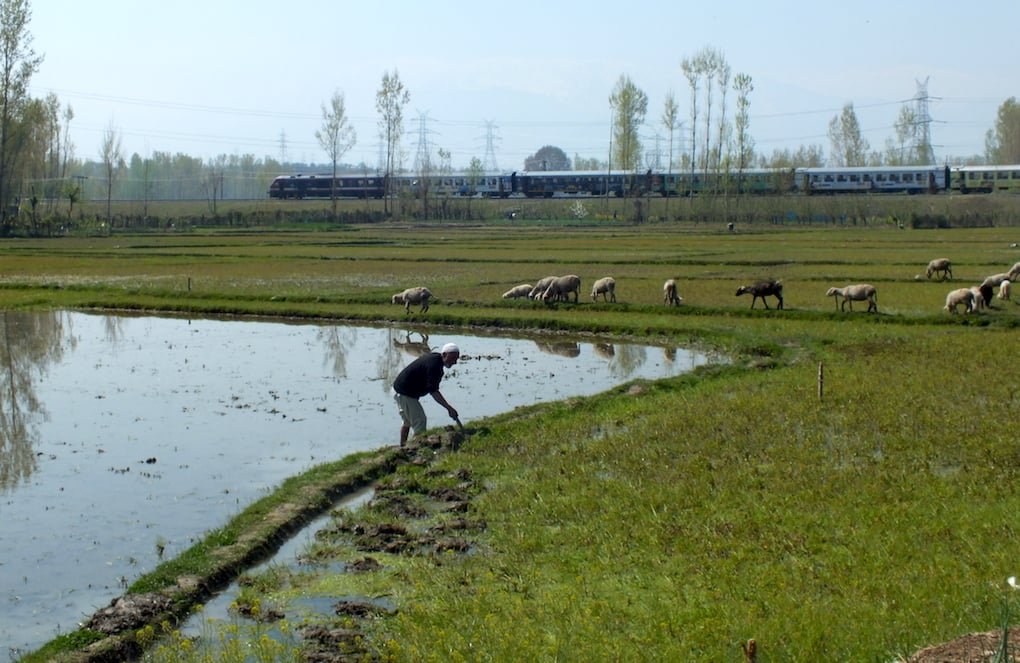Srinagar, June 30: A major irrigation crisis has gripped several parts of north Kashmir’s Baramulla district, as water from the Ferozpura Nallah is increasingly being diverted for drinking water supply under various Public Health Engineering (PHE) schemes.
Farmers allege that the unchecked extraction has left canals dry during the peak paddy season, severely impacting crop cycles. Meanwhile, Jal Shakti Department officials cite a prolonged heatwave, delayed rainfall, and declining water levels in major sources like the Jhelum River as key factors behind the rising demand for potable water.
The move has triggered widespread resentment among farmers, panchayat representatives, and civil society groups, who accuse the administration of poor planning, departmental disconnect, and political interference in the approval and execution of water supply projects.
Ferozpura Nallah sustains over 70,000 kanals of agricultural land through nine canal systems across Tangmarg, Pattan, Wagoora, and Magam. However, its downstream flow has drastically diminished in recent weeks due to increased upstream diversions for drinking water schemes.
Farmers from villages including Dargam, Tilgam, Nehalpora, Sumbal, Wagoora, and Magam report acute water shortages. Ghulam Nabi Dar, a farmer from Dargam, stated that paddy fields are being converted into wastelands.
Abdul Rashid, a farmer from Tilgam said, “The government must immediately audit all schemes drawing water from Ferozpura Nallah. What’s the point of laying more pipelines when the existing ones are already failing?” he questioned.
Local farmers, panchayat leaders, and civil society organisations are demanding an immediate halt to further extraction projects. They are calling for a clear water-sharing framework between the PHE and Irrigation departments, installation of filtration systems, and a judicial probe into pipeline projects sanctioned over the past decade.
Mohammad Haseeb, a resident of Wagoora, said there was no consultation with residents or coordination between departments. This lack of planning is crippling irrigation and threatening the livelihoods of over four lakh people,” he said.
Over the past two decades, paddy fields in Dargam and nearby areas have steadily been converted into apple orchards not due to market preference, but out of necessity. With irrigation failing, traditional rice farming is in decline.
Responding to the crisis, Er. Faisal Abdullah Dar, Executive Engineer, Hydraulic Circle Baramulla and Bandipora, said the department uses the Jhelum and other sources where feasible, but in hilly regions, they are compelled to rely on local nallahs.
“It is a constant balancing act managing both irrigation and drinking water needs,” he told Rising Kashmir.
On concerns about the number of schemes relying on Ferozpura Nallah, Dar admitted he did not have exact figures but maintained the plans were “well-structured.”
He blamed the crisis on multiple factors, including a prolonged heatwave, below-average rainfall, and reduced water levels in the Jhelum.
Er. Afrooz Ahmad Rather, Executive Engineer, Jal Shakti FBI Division, Tangmarg, said curtailments in the drinking water supply may be necessary in parts of the sub-division.
“We will be holding a review meeting soon to assess the situation. But clearly, the heatwave and delayed monsoon are the primary causes of the current imbalance,” he said.


